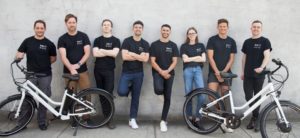Billionaire Elon Musk’s brain chip company Neuralink is readying to launch its first-ever human trails. The company is into conceiving implants to be able to communicate with machines by thought and the firm is now looking to test it on humans, for which it is looking to recruit a director to manage the project.
Neuralink’s first clinical trials with a small number of human patients aimed at treating paralysis or paraplegia, the company’s head surgeon Dr. Matthew MacDougall said.
According to reports, Musk is preparing to take Neuralink’s brain chip research to the next stage by hiring a mission-driven Clinical Trial Director to begin human testing. The company is moving toward potentially finding a way to use the technology to treat people with brain and spinal injuries.
The advertisement for the post of director read, “You’ll work closely with some of the most innovative doctors and top engineers, as well as working with Neuralink’s first clinical trial participants. You will lead and help build the team responsible for enabling Neuralink’s clinical research activities and developing the regulatory interactions that come with a fast-paced and ever-evolving environment.”
Chip has been tested on animals earlier
The neurotechnology firm aims to develop implants that can treat neural disorders, which may one day be powerful enough to put humanity on a more even footing with possible future superintelligent computers.
Earlier Neuralink conducted trials of its neurotech on pigs and monkeys, including one test that involved implanting a chip into a monkey’s brain.
Using the device, the primate found a way to interact with a computer and play video games such as “mind pong,” proving humans may eventually be able to use the chip to control computerized devices with their minds.
Musk described Neuralink’s chip as roughly 23 millimeters (0.9 inch) in diameter as “a Fitbit in your skull with tiny wires.” Neuralink wants to first use the device with people with severe spinal cord injury to help them talk, type and move using their brain waves.
Neuralink works by recording and decoding electrical signals from the brain using more than 2,000 electrodes implanted in regions of the monkey’s motor cortex that coordinate hand and arm movements, the video’s voiceover said.
Musk tweeted last year, reinforcing the company’s goals. “Later versions will be able to shunt signals from Neuralinks in the brain to Neuralinks in body motor or sensory neuron clusters, thus enabling, for example, paraplegics to walk again.”

































